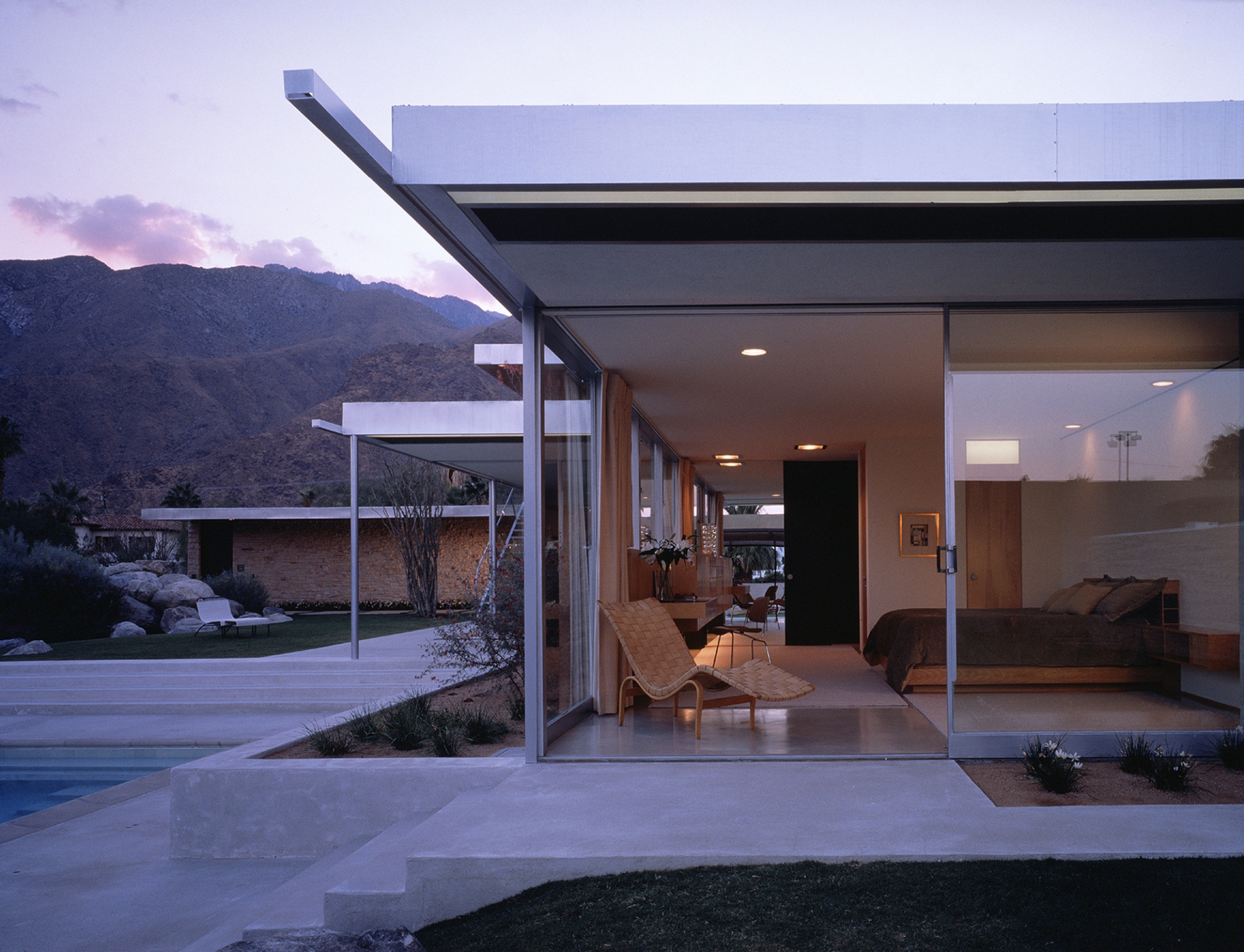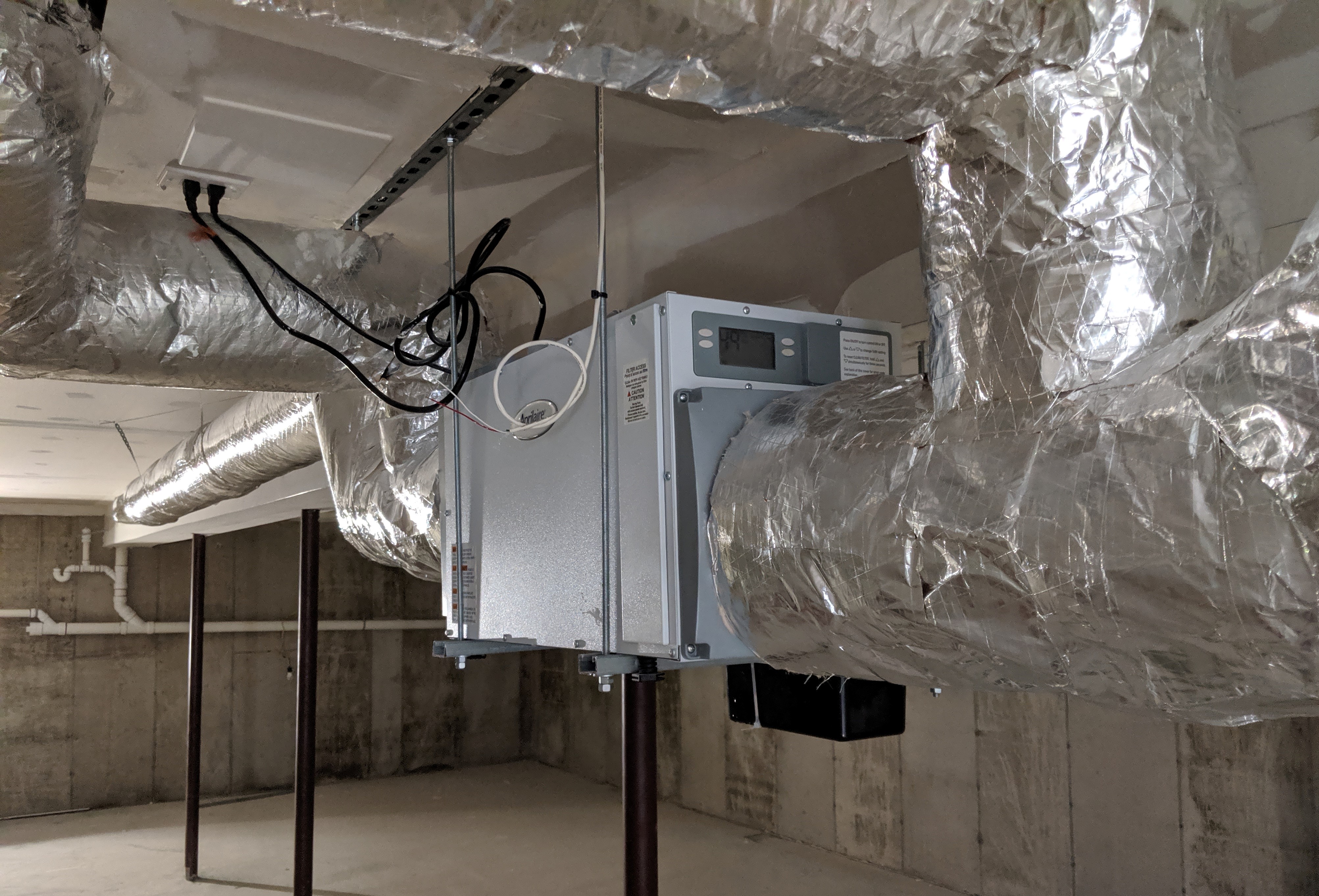Table Of Content

The Kaufmann House was designed and built when American architecture was undergoing significant transformation. The mid-20th century marked the rise of the International Style, characterized by minimalism, open floor plans, and a harmonious blend of aesthetic simplicity and functionalism. Edgar J. Kaufmann, a prominent Pittsburgh department store owner, was deeply embedded in the architectural innovations of his time. Having previously commissioned Frank Lloyd Wright to create the iconic Fallingwater in Pennsylvania, Kaufmann’s collaboration with Richard Neutra signified a pivot towards the burgeoning modernist movement on the West Coast. The Kaufmann House achieved iconic status through its architectural innovation and the lens of Julius Shulman, one of the most influential architectural photographers of the 20th century. Shulman’s photographs of the house, particularly the striking image taken at twilight with the interior lit and the pool reflecting the house and sky, have become defining images of modernist architecture.
In Palm Springs, Neutra’s famed Kaufmann Desert House aims for $25 million
After purchasing the house and its more than an acre of land for about $1.5 million, the Harrises removed the extra appendages and enlisted two young Los Angeles-area architects, Leo Marmol and Ron Radziner, to restore the Neutra design. When Brent and Beth Harris first saw the Kaufmann House, it was neither a pretty palace nor an obvious candidate for restoration. Strikingly photographed in 1947 by Julius Shulman, it stood vacant for several years after Kaufmann’s death in 1955. Then it went through a series of owners, including the singer Barry Manilow, and a series of renovations. Along the way, a light-disseminating patio was enclosed, one wall was broken through for the addition of a media room, the sleek roof lines were interrupted with air-conditioning units, and some bedrooms were wallpapered in delicate floral prints. In 2003 Sotheby’s sold the 1951 Farnsworth House southwest of Chicago, designed by Mies van der Rohe, at auction for $7.5 million.
Barbie mania hits Palm Springs; how the 'Golf Capital of the World' inspired the film's iconic dream house - kuna noticias y kuna radio
Barbie mania hits Palm Springs; how the 'Golf Capital of the World' inspired the film's iconic dream house.
Posted: Mon, 24 Jul 2023 07:00:00 GMT [source]
A Landmark Modernist House Heads to Auction
These photographs do more than merely document the structure; they encapsulate Neutra’s vision of blending architecture with its environment, creating a visual narrative that communicates the essence of modernism to a global audience. Shulman’s ability to capture the elegance and tranquil beauty of the Kaufmann House helped cement its place in architectural history and inspired a generation of architects and designers to embrace the principles of modernism. From the street, the house looks beautifully layered with floating planes that rise in elevation as you move west. Wanting to capture more views at a higher elevation, Neutra designed the gloriette as an open-air perch on top of the house, covered by a roof and shading devices on two sides. Integrating outdoor living spaces and balconies was a consistent theme in Neutra’s past work.
Modernist architectural marvel made famous by Slim Aarons for sale for $25m

Throughout, there is a strong connection between the indoors and outdoors, reinforced through large swaths of glazing and shade-inducing vertical aluminum louvers that are also one of the home’s highlights. Although both have unprotected glass in the southern part of a home located in the middle of the desert seems crazy, this is because the house was to be used only one month per year, in January. The natural stone from Utah who Neutra used in the exterior and interior creates a vivid chiaroscuro effect that is difference in the smoothness in other finishes. However, the stone is carefully chiseled, both in the original house, for which Neutra trained masons who had worked in Falling Water, who had come Kaufmann, as in the restoration carried out by the new owners by mid in the 90s and lasted five years. The Harrises also bought several adjoining plots to more than double the land around the 3,200-square-foot house, restoring the desert buffer that Neutra envisioned. They rebuilt a pool house that serves as a viewing pavilion for the main house, and kept a tennis court that was built on a parcel added to the original Kaufmann property.
New Couple Attempting To Build House On Tricky Historic Site - Urban Milwaukee
New Couple Attempting To Build House On Tricky Historic Site.
Posted: Wed, 08 Nov 2023 08:00:00 GMT [source]
Architectural Design
The Kaufmanns used the house mainly as their winter residence, relocating to Palm Springs during the colder months. After 1964 two subsequent owners altered the house, increasing the square footage from approximately 3,200 square feet to just over 5,100 square feet, which compromised the original design. In 1993, the house’s current owner hired Los Angeles architectural firm Marmol and Radziner to return the house to its original state by relying on many painstakingly researched original materials and production processes. The architects also designed a pool house located to the west of the swimming pool.
Five Things You Should Know About the Kaufmann Desert House
Neutra died in 1970 and the original plans were not available, so the couple brought in Los Angeles architects Leo Marmol and Ron Radziner to restore the design. For clues to the original design, the Harrises looked through the extensive Neutra archives at UCLA, found additional documents through Columbia University and were able to work with Shulman to access some of his never-printed photos of the home's interior. They were able to obtain pieces from the original suppliers of paint and fixtures; and they purchased a metal-crimping machine to reproduce the sheet-metal fascia that lined the roof.
Richard Neutra, Pioneer of the International Style
Marmol Radziner spent more than five years painstakingly revamping the Kaufmann Desert House in a thoughtful process that included an on-site archaeological excavation and poring over Neutra’s archives at UCLA. Such thorough research led him to convince a Utah quarry to re-open a section of its site so that more of the original buff-colored sandstone could be obtained. A fabricator in Kansas also fired up a defunct machine to reproduce crimped metal. Birch-veneered plywood was matched, concrete and silica sand floors were patched, and even ductwork was carefully hidden. Additionally, the Harrises were able to have a long-closed section of a Utah quarry re-opened to mine matching stone to replace what had been removed or damaged.
The north and south wings are the most public parts of the house that connect to the central living area. The south wing consists of a covered walkway that leads from the center of the house to the carport. However, the steel construction is not just supported by steel columns, beams, and pilotis, but it is only part of the structural system of the house.

Moreover, the new environment was designed so that its occupants could fine-tune its features for physical comfort, most notably the radiant heating and cooling systems for the concrete surfaces of the outside terraces. Lastly, within the hostile desert surroundings the new environment was to be a safe one as exemplified by the mirrors Neutra installed in unexpected places, which allowed the inhabitants to scan their immediate surroundings. A bigger opportunity arose in 1950, when the city commissioned Neutra and his colleague Robert Alexander to create Elysian Park Heights, a thirty-four-hundred-unit public-housing complex in an area sometimes called Chavez Ravine. On the site stood three semirural villages—Palo Verde, Bishop, and La Loma—inhabited almost exclusively by Mexican Americans.
In June Jean Prouvé’s 1951 Maison Tropicale, a prototype for prefabricated homes for French colonial officials stationed in Africa, sold at Christie’s for $4.97 million. Barry Manilow ultimately moved into the old Walter Braunschweiger Residence, a 1935 Spanish-style compound on a private hilltop in the town's Mesa neighborhood, leaving the Kaufmann desert house to sit empty for 3 ½ years. His realtor indicated that although the location and the site of the Kaufmann house were spectacular, the house itself was no longer considered valuable and the property was being sold (ultimately at $1.5 million) as a tear-down.
In 1941, Neutra joined a team working on Hacienda Village, in Watts, where one of the lead designers was the pathbreaking Black architect Paul Revere Williams. In the same period, Neutra oversaw a housing development for defense workers, Channel Heights, in San Pedro. In that almost bucolic scheme, low-rise buildings stood amid fields of wildflowers, with playgrounds, schools, and shopping all at hand. Although occupants found Channel Heights eminently livable, it lacked the kind of density that housing planners required. Santa Maria del Fiore, also known as the Duomo of Florence, is an iconic architectural landmark in the Tuscan capital.
Nestled in the foothills of Palm Desert, California, the Annenberg Estate is a stunning example of mid-century modern architecture. Quincy Jones for media mogul Walter Annenberg, the original estate is comprised of 25,000 square foot house on 200 acres. A combined living and dining space, roughly square, lies at the center of the house. While the house favors an east-west axis, four long perpendicular wings extend in each cardinal direction from the living areas. Thoughtful placement of larger rooms at the end of each wing helps define adjacent outdoor rooms, with circulation occurring both indoors and out. The Kaufmann House distills space in the silver-plated horizontal planes that rest atop transparent glass panes.
The house alone is unbalanced and heavy as the wings are not equally proportioned, but with the addition and placement of the swimming pool there is a cohesive balance and harmony throughout the design. One of the most important architects of the 20th Century, yet often overlooked, Richard Neutra has been on the forefront of modern residential architecture. After moving to the United States from Vienna, Austria in 1923, Neutra worked with Frank Lloyd Wright and Rudolf Schindler until 1930 when he started his own practice. The Lovell House is claimed to be the first house in the United States to use a steel structure that is typically found in skyscraper construction – Neutra learned these new techniques when he was working in New York and with Holabird & Roche in Chicago. The Lovell House was designed for the active, health conscious Lovell family in the hills of Los Angeles. The house is an early example of the International Style in the United States that evokes principles that were developed by Le Corbusier and Frank Lloyd Wright.
A decade after Edgar Kaufmann hired Frank Lloyd Wright to design the famous Fallingwater House in Bear Run, PA, the same Kaufmann wanted to build a house on the West Coast. Neutra is said to have studied with both Adolf Loos as a student in Europe and Frank Lloyd Wright when Neutra came to America in the 1920s. An earlier version said that Edgar Kaufmann would go on to commission Fallingwater from Frank Lloyd Wright, however, Fallingwater was built before the Kaufmann Desert House.

No comments:
Post a Comment